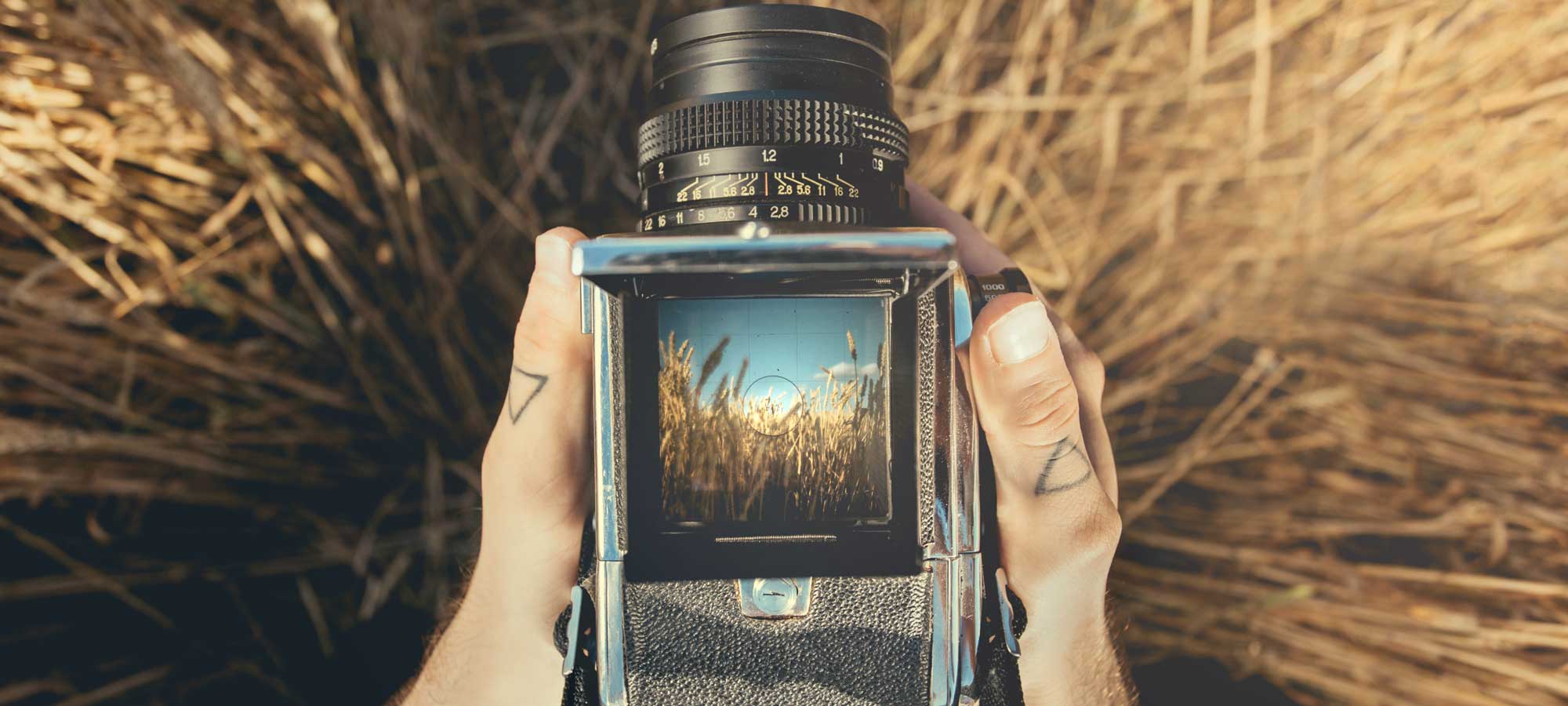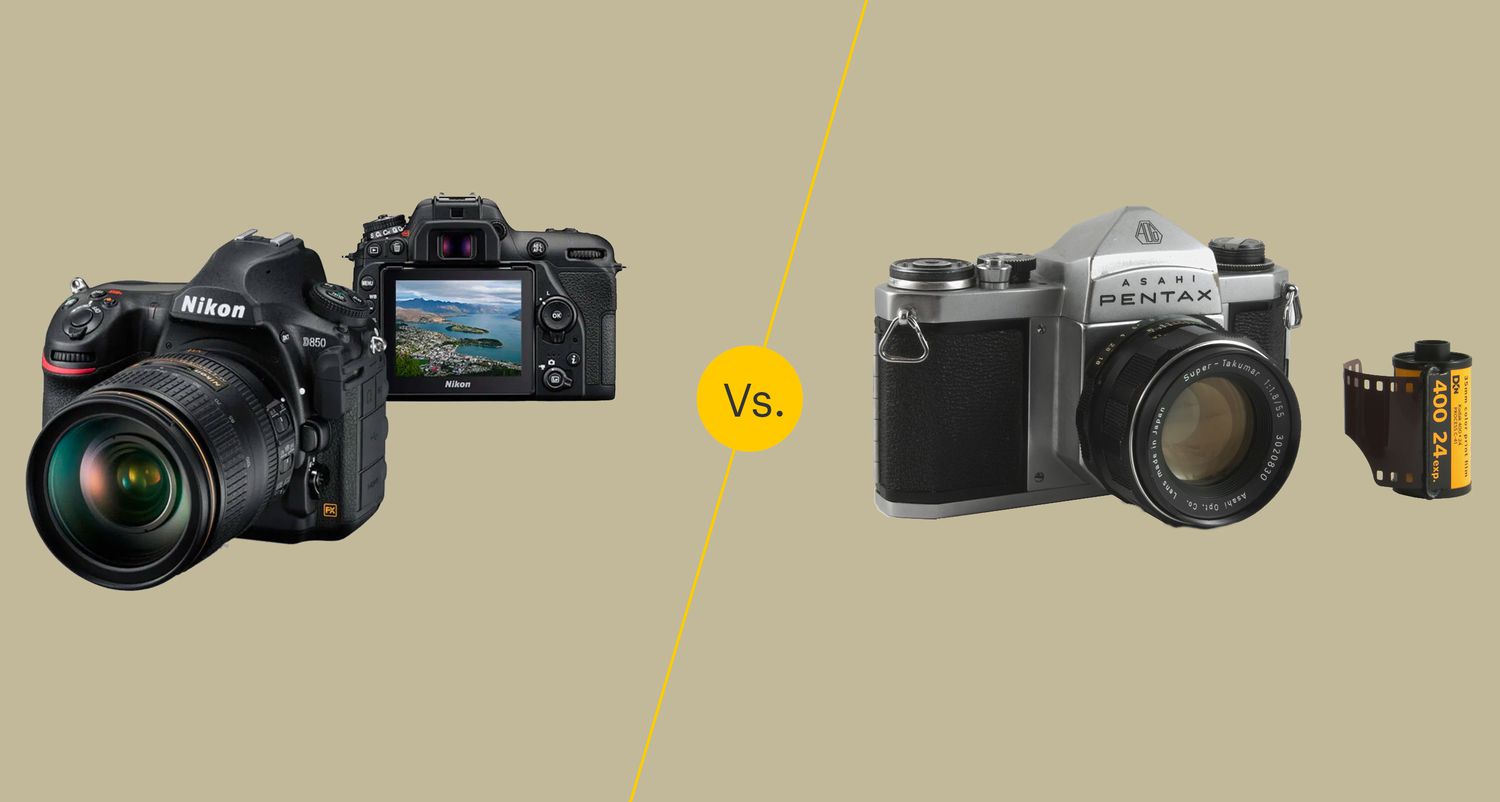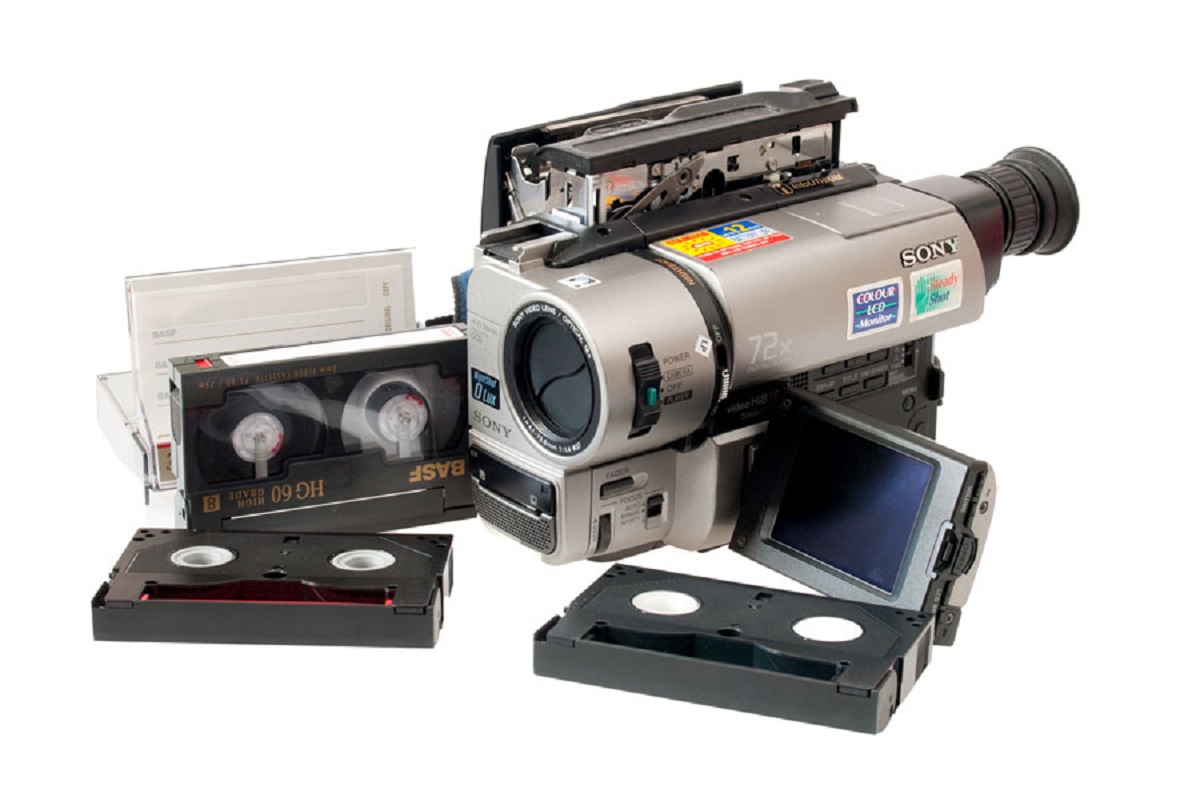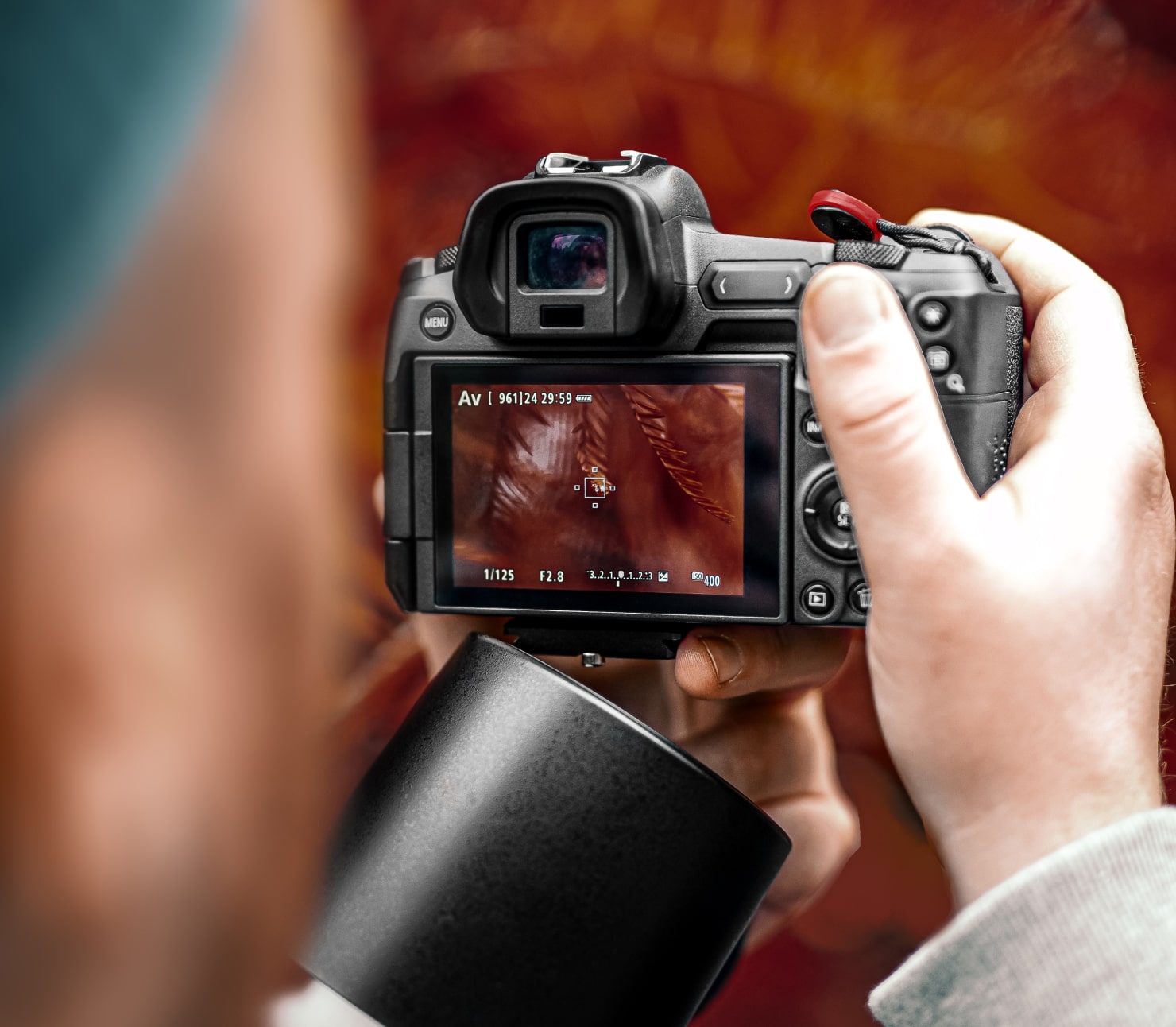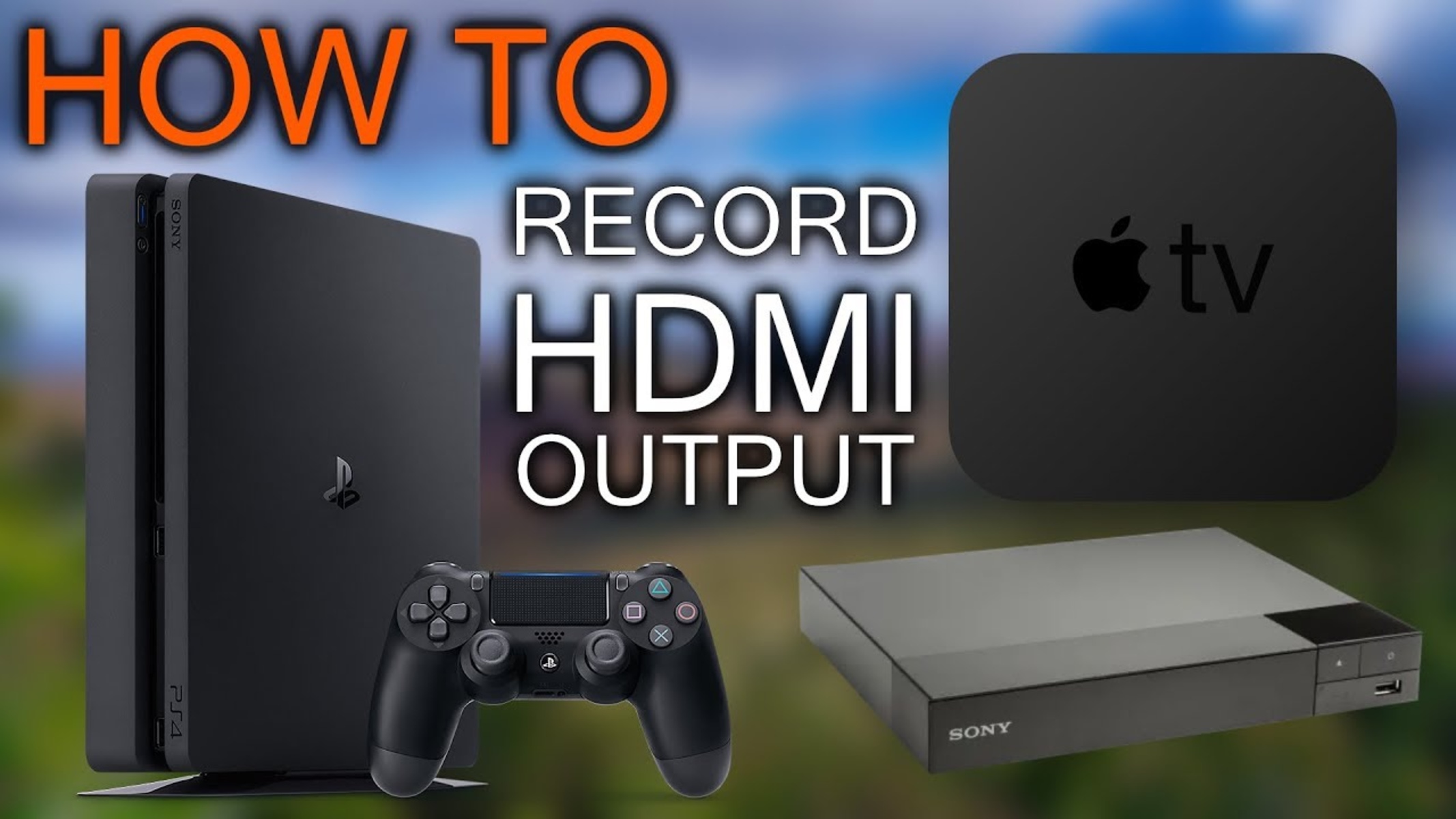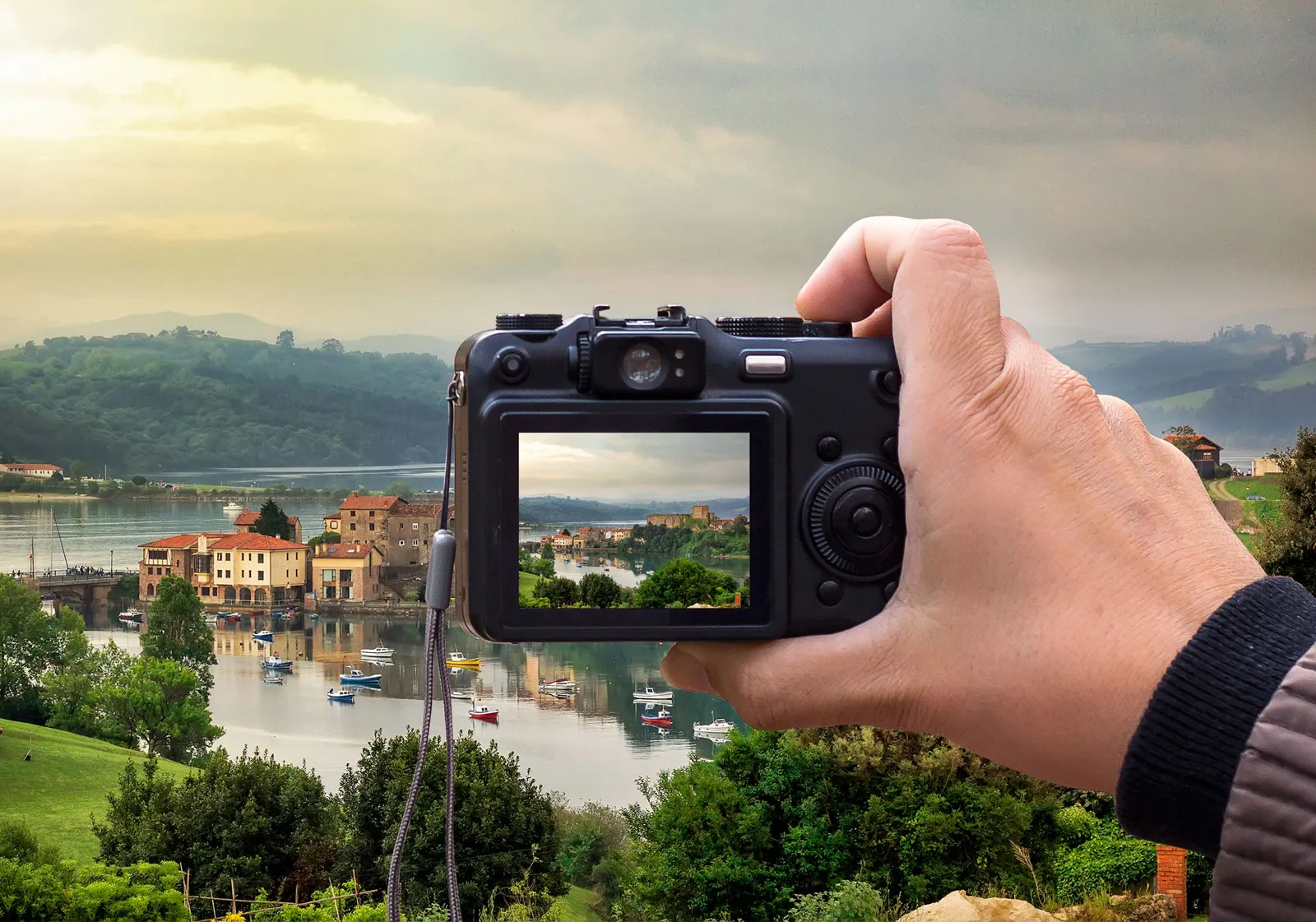Introduction
Welcome to the world of medium format digital cameras! In this article, we will explore the fascinating realm of these powerful devices and discover why they are favored by professional photographers and enthusiasts alike. A medium format digital camera is a specialized tool that offers superior image quality and greater versatility compared to traditional full-frame or APS-C cameras.
Unlike their smaller counterparts, medium format digital cameras utilize larger sensors, typically 50 to 100 megapixels or more, resulting in astonishing levels of detail and clarity in images. This larger sensor size allows for better light gathering capabilities, reduced noise, and enhanced dynamic range, ultimately producing photographs with exceptional depth and richness.
So, why choose a medium format digital camera over other options? The answer lies in the pursuit of perfection. If you are a professional photographer who demands the highest level of image quality for your projects, a medium format camera is the ideal choice. Whether capturing stunning landscapes, fashion editorials, or intricate studio shots, the medium format sensor will deliver unparalleled results.
One of the primary advantages of using a medium format digital camera is the ability to produce large prints with incredible detail. The richness and clarity of medium format images are especially beneficial for commercial and fine art photography, where every nuance and texture matters. With a medium format camera, you can bring your visions to life and present them in all their grandeur.
Furthermore, medium format cameras excel in capturing an extensive dynamic range, allowing for greater flexibility in post-processing. This is particularly advantageous in situations with challenging lighting conditions, such as high contrast scenes or low light environments. The exceptional tonal range of medium format images ensures that both highlights and shadows are preserved, providing more room for adjustments during editing.
However, it’s important to consider that medium format digital cameras also come with some disadvantages. The most notable one is their size and weight. Due to the larger sensor and robust build, medium format cameras are bulkier and heavier compared to smaller cameras. This can make them less portable and more cumbersome to carry, especially during travel or outdoor photography sessions.
In the following sections, we will delve deeper into the various types of medium format digital cameras available in the market and discuss how to choose the right one for your specific needs. We will also provide valuable tips on how to effectively use a medium format camera to capture stunning images. So, let’s embark on this journey into the realm of medium format digital photography and discover the unparalleled possibilities it offers!
What is a Medium Format Digital Camera?
A medium format digital camera is a specialized type of camera that utilizes a larger sensor size compared to traditional full-frame or APS-C cameras. These cameras are designed to deliver exceptional image quality, making them a popular choice among professional photographers and enthusiasts who demand the utmost precision and detail in their photographs.
Unlike smaller cameras, which typically have sensor sizes of around 35mm, medium format cameras boast significantly larger sensors. These sensors can range from approximately 50 to 100 megapixels or more, allowing for incredibly high-resolution images. The larger sensor size translates to greater light sensitivity, reduced noise, and enhanced dynamic range, resulting in stunningly detailed and vibrant photographs.
In addition to the larger sensor, medium format digital cameras often feature a robust construction and advanced imaging technology. The build quality of these cameras is designed to withstand the demands of professional use, ensuring durability and reliability in various shooting conditions.
Medium format cameras also offer a range of interchangeable lenses, providing photographers with the versatility to achieve their desired focal length and perspective. From wide-angle lenses for sweeping landscapes to telephoto lenses for capturing distant subjects, the lens options available for medium format cameras empower photographers to express their creativity with precision and clarity.
One notable feature of medium format cameras is their ability to capture an extensive dynamic range. This means they can capture a wider range of tones between the brightest highlights and the darkest shadows in a scene. This feature is particularly useful in photographers who rely on post-processing techniques to fine-tune their images, as it provides more flexibility for adjusting exposure and bringing out details in both bright and dark areas of a photograph.
While medium format digital cameras are often associated with professional photographers, they have become increasingly accessible to enthusiasts and advanced hobbyists in recent years. The advancements in technology and the availability of more affordable options have made it possible for a wider range of photographers to experience the benefits of medium format photography.
Whether you’re a professional looking to enhance your craft or an enthusiast seeking to elevate your photography to the next level, a medium format digital camera opens up a world of possibilities. With its superior image quality, exceptional detail, and versatility, a medium format camera is a powerful tool that allows photographers to capture and showcase their subjects with unparalleled precision and artistry.
Why Use a Medium Format Digital Camera?
When it comes to professional photography, image quality is paramount. This is where a medium format digital camera truly shines. Let’s explore the reasons why photographers choose to use a medium format camera.
The primary advantage of a medium format digital camera is its ability to deliver exceptional image quality. The larger sensor size captures more detail, resulting in images that are incredibly sharp, vibrant, and rich in tonal range. This level of detail is especially crucial for commercial photography, where every pixel matters, and clients demand the highest quality images for their promotional materials.
In addition to the increased resolution, medium format cameras offer superior dynamic range. This means that these cameras can capture a greater range of tones and details in both the highlights and shadows of a scene. This dynamic range is particularly useful when dealing with high-contrast lighting conditions, ensuring that no details are lost in areas of brightness or darkness.
Another reason to choose a medium format digital camera is the superior color reproduction. These cameras are renowned for their ability to capture accurate and vibrant colors, allowing photographers to create images that evoke a strong emotional response. Whether photographing landscapes, portraits, or still life, the vivid and true-to-life colors produced by a medium format camera can make a significant impact on the final result.
Image quality is not the only advantage of medium format cameras. These cameras also offer greater flexibility in post-processing. With the abundance of image information captured by the larger sensor, photographers have more room to adjust and fine-tune their images during editing. The ability to push the boundaries of post-processing without compromising image quality is a significant advantage for professionals who strive for perfection in their final images.
For photographers who specialize in studio work, a medium format camera excels in capturing intricate details and textures. From product photography to fashion and fine art, the larger sensor size allows for stunning close-ups and macro shots that reveal every nuance and subtlety. With a medium format camera, photographers can create images that truly showcase the craftsmanship and beauty of their subjects.
While medium format digital cameras do come with a higher price tag compared to their smaller counterparts, the investment can be well worth it for professional photographers. The superior image quality, exceptional detail, and flexibility in post-processing make medium format cameras the preferred choice for those seeking the highest standards in their work.
Whether you’re a professional photographer looking to elevate your artistry or an enthusiast with a passion for capturing the finest details, a medium format digital camera is a powerful tool that opens up new horizons in image quality and creative possibilities.
Advantages of a Medium Format Digital Camera
Medium format digital cameras offer several distinct advantages that make them a valuable tool for professional photographers and enthusiasts alike. Let’s explore some of the key advantages of using a medium format camera.
1. Superior Image Quality: The larger sensor size of medium format cameras allows for higher resolution and finer detail in images. With resolutions ranging from 50 to 100 megapixels or more, medium format cameras produce incredibly sharp and detailed photographs. This level of image quality is especially beneficial for commercial photography, where every detail matters.
2. Enhanced Dynamic Range: Medium format cameras excel in capturing a wide dynamic range, meaning they can capture a more extensive tonal range from shadows to highlights. This ability ensures that no details are lost in challenging lighting situations, resulting in images with greater depth and richness.
3. Exceptional Color Reproduction: The larger sensor size and advanced color processing algorithms of medium format cameras allow for accurate and vibrant color reproduction. Photographers can capture images with true-to-life colors, enhancing the overall impact and emotional resonance of their work.
4. Greater Flexibility in Post-Processing: With the abundance of image information captured by a medium format camera, photographers have more flexibility during post-processing. The larger file sizes provide more latitude for adjusting exposure, white balance, and other parameters without sacrificing image quality. This allows photographers to fine-tune their images and achieve the desired look and feel.
5. Enhanced Low Light Performance: The larger sensor size of medium format cameras enables them to perform exceptionally well in low light conditions. The bigger pixels on the sensor gather more light, reducing noise and delivering cleaner images even at higher ISO settings. This is especially advantageous for photographers who frequently shoot in challenging lighting situations.
6. Versatile Lens Options: Medium format cameras offer a wide range of interchangeable lenses, allowing photographers to achieve their desired focal lengths and perspectives. From wide-angle to telephoto, macro to tilt-shift lenses, the versatility of lens options empowers photographers to capture their subjects with precision and creative freedom.
7. Professional Build Quality: Medium format cameras are built to withstand the demands of professional use. They are typically constructed with robust materials and weather-sealed against dust and moisture, ensuring reliability and durability in various shooting environments.
8. Increased Print Size Potential: The superior image quality and high resolution of medium format cameras make them ideal for producing large prints with incredible detail. Whether for commercial displays, fine art prints, or gallery exhibitions, medium format images can be blown up to impressive sizes while maintaining their sharpness and quality.
With their superior image quality, exceptional color reproduction, and flexibility in post-processing, medium format digital cameras offer a range of advantages that cannot be matched by smaller sensor cameras. Whether you’re pursuing commercial photography, landscape, fashion, or fine art, investing in a medium format camera can elevate your work and help you achieve stunning results with unmatched precision and detail.
Disadvantages of a Medium Format Digital Camera
While medium format digital cameras offer numerous advantages, it’s important to consider their disadvantages as well. Let’s explore some of the challenges that come with using a medium format camera.
1. Size and Weight: One of the main drawbacks of medium format cameras is their larger size and heavier weight compared to smaller cameras. The larger sensor and robust build require more physical space, making medium format cameras less portable and more cumbersome to carry, especially during outdoor or travel photography.
2. Cost: Medium format cameras are typically more expensive than full-frame or APS-C cameras. The larger sensors, advanced technology, and specialized lenses contribute to the higher price tag. This cost can be a significant barrier for some photographers, particularly those who are just starting or on a tight budget.
3. Limited Autofocus and Speed: Due to their larger sensor size, medium format cameras often have slower autofocus systems and continuous shooting speeds when compared to smaller cameras. While these cameras are not designed for fast action photography, it’s worth noting that their autofocus performance and burst shooting capabilities may not match the speed and precision of dedicated sports or wildlife cameras.
4. Limited Lens Selection: While medium format cameras do offer a range of versatile lens options, the selection is often more limited compared to full-frame or APS-C systems. This can limit the flexibility and variety of focal lengths that photographers have at their disposal, especially for specialized lenses or niche photography genres.
5. Steeper Learning Curve: Transitioning from smaller sensor cameras to a medium format system can involve a steep learning curve. The larger files, different sensor characteristics, and unique quirks of medium format cameras may require photographers to invest time and effort in mastering the nuances of these systems to achieve optimum results.
6. Availability of Accessories: Medium format cameras may have a more limited range of supporting accessories compared to mainstream camera systems. This can include items such as flashes, remote triggers, and other ancillary gear that photographers may rely on for their specific shooting needs. It’s important to consider the availability and cost of these accessories when investing in a medium format system.
7. Reduced Low Light Performance: While medium format cameras generally perform well in low light conditions, their larger sensor size can also result in higher noise levels at higher ISO settings compared to smaller sensor cameras. This can limit the low light capabilities of medium format cameras, especially in challenging lighting situations where noise reduction becomes a concern.
Despite these disadvantages, many photographers find that the exceptional image quality and other advantages of medium format cameras outweigh the challenges. It’s important to carefully weigh the pros and cons, considering your specific needs and shooting requirements, before making a decision to invest in a medium format digital camera.
Different Types of Medium Format Digital Cameras
When it comes to medium format digital cameras, there are several types available, each offering unique features and capabilities. Let’s explore some of the different types of medium format cameras in the market today.
1. Modular Medium Format Cameras: These are the most versatile and customizable medium format cameras. They consist of separate components that can be combined to create a complete camera system. The components typically include a digital back, which houses the sensor, and a camera body with interchangeable lens mounts. This modular design allows photographers to choose from a variety of digital backs and camera bodies, providing flexibility and future upgradability.
2. Integrated Medium Format Cameras: Integrated medium format cameras, also known as all-in-one cameras, feature a fixed digital back and a built-in camera body. These cameras are designed as a single unit, with the digital back and lens mount permanently attached. Integrated medium format cameras are compact and user-friendly, making them a popular choice for photographers who value convenience and portability.
3. Medium Format Mirrorless Cameras: These cameras combine the larger medium format sensor with the mirrorless camera design, eliminating the need for a traditional mirror and optical viewfinder. Medium format mirrorless cameras often feature electronic viewfinders and advanced autofocus systems, offering a more compact and lightweight alternative to traditional medium format systems.
4. Medium Format DSLRs: Similar to their full-frame counterparts, medium format DSLRs feature a dedicated mirror and optical viewfinder. These cameras offer the familiarity and handling of a DSLR, making them a comfortable choice for photographers transitioning from smaller sensor DSLRs. Medium format DSLRs often provide advanced customization options and robust build quality.
5. Rangefinder Medium Format Cameras: Rangefinder medium format cameras harken back to the classic film era, featuring a rangefinder focusing system. These cameras have a separate viewfinder window beside the lens that allows photographers to align two images to achieve precise focusing. Rangefinder medium format cameras often have compact bodies and lightweight design, making them popular for street and documentary photography.
6. Digital Medium Format Backs: Digital medium format backs are designed to be used with compatible film medium format cameras. They are essentially the digital component that replaces the film back of the camera. These backs provide a digital sensor and interface for capturing high-resolution images while retaining the advantages of using traditional film cameras. Digital medium format backs offer a cost-effective option for photographers who already own film medium format cameras and want to transition into digital photography.
Each type of medium format digital camera offers its own set of advantages and considerations. When choosing a medium format camera, it’s essential to consider factors such as image quality, versatility, handling, and pricing to find the best fit for your specific needs and shooting style.
How to Choose a Medium Format Digital Camera
Choosing the right medium format digital camera can be an exciting yet challenging task. With the variety of options available in the market, it’s important to consider several factors to ensure that you select a camera that suits your specific needs and shooting style. Here are some key considerations to keep in mind when choosing a medium format camera:
1. Image Quality: Image quality is paramount when it comes to medium format cameras. Consider the sensor size, resolution, and dynamic range offered by different models. Look for cameras with high-resolution sensors and excellent dynamic range to capture stunning levels of detail and tonal range in your images.
2. Versatility: Consider the versatility of the camera system. Look for a wide range of lens options to suit your shooting needs. Ensure that there are lenses available for various focal lengths and specialties such as macro or tilt-shift photography. A versatile camera system allows you to explore different genres and experiment with different perspectives.
3. Handling and Ergonomics: Consider the ergonomics and handling of the camera. How does it feel in your hands? Are the buttons and controls easily accessible? Make sure the camera’s design and interface align with your preferences and shooting style. A comfortable and intuitive camera will enhance your shooting experience and allow you to focus on capturing the perfect shot.
4. Budget: Set a budget and determine what you are willing to invest in a medium format camera. Keep in mind that medium format cameras tend to be more expensive than smaller sensor cameras. Consider the cost of not only the camera body but also additional lenses and accessories that you may need. Strike a balance between your budget and the features and quality you desire.
5. Size and Weight: Consider the portability of the camera system, especially if you plan on traveling or shooting on location frequently. Medium format cameras can vary in size and weight, so evaluate how important portability is to your style of photography. Remember that larger and heavier systems may require additional carrying solutions and can be more physically demanding to handle.
6. System Compatibility: Assess the compatibility and availability of accessories for the camera system. Consider things like flash systems, remote triggers, and other supporting gear that you may require for your photography. Ensure that the camera system has a robust ecosystem of compatible accessories to expand your creative possibilities.
7. User Reviews and Recommendations: Take the time to research and read user reviews and recommendations from other photographers who have experience with the cameras you are considering. Their insights and experiences can provide valuable perspectives and help you make an informed decision.
By considering these factors, you can evaluate and find a medium format digital camera that meets your specific requirements and enables you to capture exceptional images. Remember that choosing the right camera is a personal decision, and what works for one photographer may not suit another. Take your time, do your research, and select a camera that inspires you to create and push the boundaries of your photography.
How to Use a Medium Format Digital Camera Effectively
Using a medium format digital camera effectively requires understanding the unique characteristics and capabilities of these powerful devices. Here are some tips to help you make the most of your medium format camera:
1. Master the Fundamentals: Begin by mastering the basic principles of photography, regardless of the camera you’re using. Understand concepts such as exposure, composition, and lighting. These fundamental skills form the foundation for creating compelling images and will benefit you no matter the camera format.
2. Utilize Tripods and Stability: Due to their larger size and weight, medium format cameras can be more prone to camera shake. Invest in a sturdy tripod to ensure stability and sharpness in your images, especially when shooting in low light or using slower shutter speeds. Consider using a remote shutter release or timer whenever possible to further minimize camera shake.
3. Fine-Tune Your Focus: Medium format cameras offer incredible detail, so accuracy in focusing is essential. Take advantage of the camera’s focus assist features like focus peaking or magnification to achieve precise focus. Pay attention to your depth of field and ensure critical areas are sharp. Use narrow apertures and focus stacking techniques when needed for increased depth of field.
4. Experiment with Different Lenses: Medium format cameras provide a wide range of lens options. Experiment with different focal lengths and lens characteristics to achieve varied perspectives and effects. Wide-angle lenses are great for expansive landscapes, while telephoto lenses can compress a scene and isolate subjects. Explore the unique qualities each lens offers to expand your creative possibilities.
5. Take Advantage of the Dynamic Range: One of the significant advantages of medium format cameras is their exceptional dynamic range. Understand how to leverage this feature by properly exposing your images to retain details in both the highlights and shadows. Incorporating graduated neutral density filters or using post-processing techniques like HDR can help further extend the dynamic range in challenging lighting situations.
6. Maximize Post-Processing Potential: Shooting in a higher resolution format means that there’s more flexibility in post-processing. Take advantage of this by shooting in a RAW format and utilizing image editing software to fine-tune your images. Experiment with adjusting exposure, white balance, contrast, and applying selective adjustments to make the most out of the captured information.
7. Practice Patience and Attention to Detail: Medium format photography often requires a more thoughtful and deliberate approach. Due to the larger file sizes, it’s important to be patient and allow sufficient time for the camera to write the image to the memory card. Pay close attention to all aspects of the frame, including composition, lighting, and subject placement, to ensure every detail contributes to the overall image quality.
8. Shoot with Intent: With the exceptional image quality offered by medium format cameras, it’s important to shoot with intention and purpose. Instead of capturing a large number of shots in rapid succession, take the time to carefully compose each image and consider the story you want to tell. This mindset will help you create images that are impactful and meaningful.
By following these tips and developing a deeper understanding of your camera’s capabilities, you can effectively utilize your medium format digital camera to capture stunning and high-quality images that truly showcase the beauty and detail of your subjects.
Conclusion
Medium format digital cameras offer a level of image quality and versatility that is highly sought after by professional photographers and enthusiasts. With their larger sensors, exceptional dynamic range, and superior color reproduction, these cameras enable photographers to capture images with stunning detail, vibrant colors, and rich tonal range. The advantages of medium format cameras extend beyond image quality, as they also provide greater flexibility in post-processing and the ability to produce large prints with exceptional detail.
While medium format cameras come with their own set of challenges, such as size, weight, and cost, the benefits they offer make them a valuable tool for photographers who strive for excellence in their work. Whether you choose a modular system for versatility, an integrated camera for convenience, or a mirrorless or DSLR format for specific shooting preferences, finding the right medium format camera involves considering factors such as image quality, versatility, handling, budget, and system compatibility.
Once you’ve chosen a medium format digital camera, effective use of the system requires mastering the fundamental principles of photography, paying attention to stability and focus accuracy, experimenting with different lenses and perspectives, harnessing the camera’s dynamic range, maximizing post-processing potential, and shooting with intent and attention to detail.
Medium format digital cameras offer a unique opportunity to push the boundaries of your photography, capturing images with unmatched clarity, detail, and impact. Whether you’re a professional photographer looking to elevate your artistry or an enthusiast seeking to immerse yourself in the world of high-quality imagery, a medium format camera is a tool that can take your photography to new heights.







